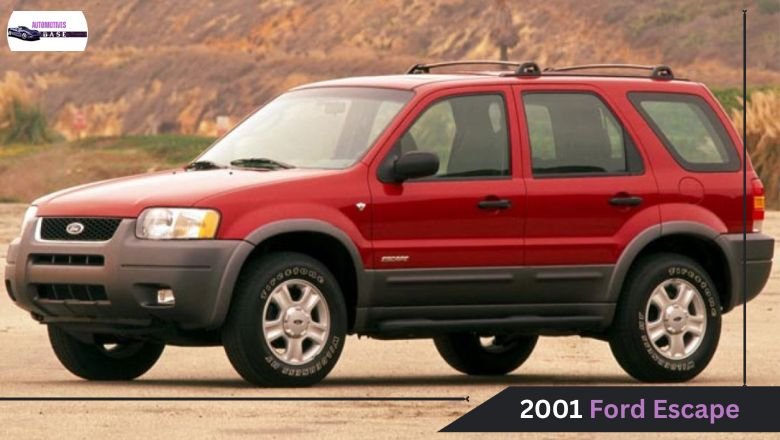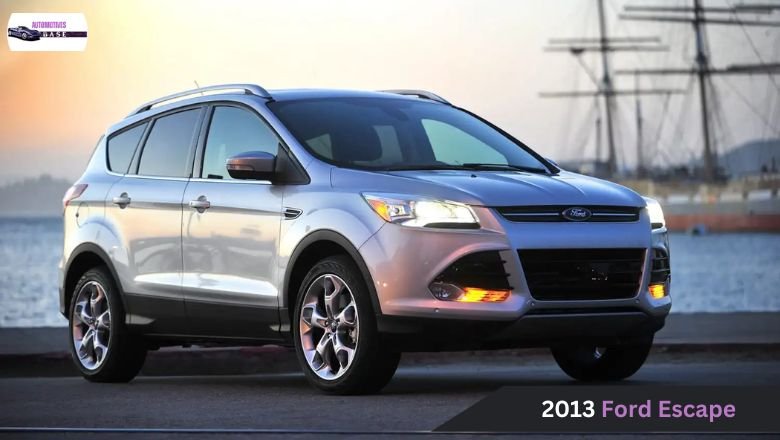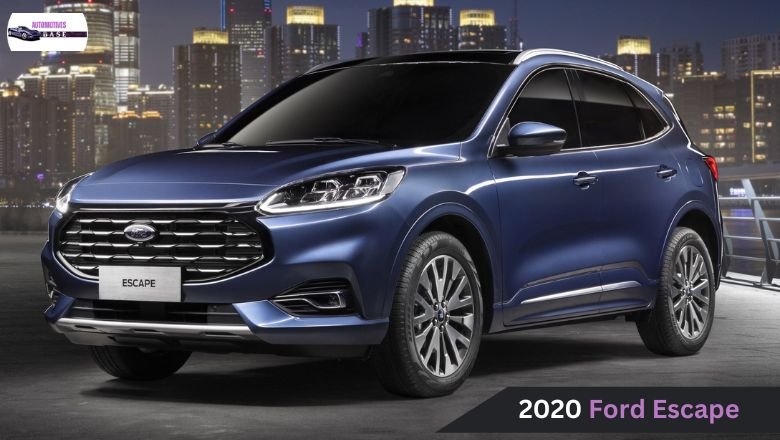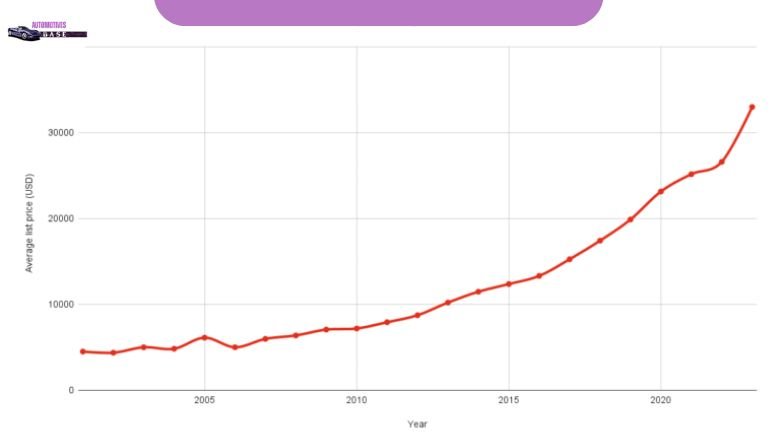We have ranked each Ford Escape model from every generation to help you navigate through the best and worst Ford Escape years. By analyzing data from trusted sources like NHTSA, Vehicle History, and Consumer Reports, we unveil the top-performing and most reliable Ford Escape years while also shedding light on the models to steer clear of.
From unparalleled reliability ratings to common issues reported by owners, this article is your go-to resource for making an informed decision when choosing your next Ford Escape.
Ford Escape Generations
The Ford Escape has evolved through multiple generations since its debut in 2001, offering a blend of performance and comfort in the compact SUV market. Each generation brings significant changes in design, technology, safety features, and driving dynamics.
| Generations | Years |
|---|---|
| 1st generation (BA/ZA/ZB) | 2001-2007 |
| 2nd generation (CD2) | 2008-2012 |
| 3rd generation (C520) | 2013-2019 |
| 4th generation (CX482) | 2020-Present |
The best Ford Escape years are often found in later generations due to advancements in technology and safety features. It is important to research specific years thoroughly to avoid potential drawbacks related to reliability or mechanical problems.
Ford Escape Best, Neutral, and Worst Years
When evaluating the best and worst years for the Ford Escape, a variety of factors are taken into account to assess overall performance and reliability. These include owner-reported reliability, annual maintenance costs, safety ratings, Consumer Reports scores, NHTSA recalls, and more.
By analyzing data from sources like Consumer Reports, JD Power, and Kelley Blue Book, among others, a comprehensive view of the Ford Escape’s yearly performance is created. This information helps consumers make informed decisions about which model year may suit their needs best in terms of reliability and satisfaction.

The neutral years of the Ford Escape refer to model years that have both positive and negative elements. Factors such as NHTSA recalls can impact evaluations, with higher numbers of complaints, recalls, and safety issues indicating lower reliability and potentially decreased owner satisfaction.
The best Ford Escape years typically have low recall rates and few reported problems, leading to higher overall reliability. The worst Ford Escape years may suffer from frequent issues like transmission problems or electrical malfunctions, causing frustration for owners. It is important to consider these aspects when deciding which model year of the Ford Escape to purchase.
Best And Worst Ford Escape Years, 1st Generation (2001–2007)
The Ford Escape 1st Generation, introduced in 2001, marked Ford’s entry into the compact SUV market. Its launch combined practicality with off-road prowess and city-friendly size, appealing to a wide range of drivers. Issues with reliability plagued the models from 2001 to 2006, making them less desirable for potential buyers.

The 2007 Ford Escape emerged as a standout performer in this generation. It garnered praise for improved build quality and enhanced dependability. The 2007 model year showcased advancements and fixes that addressed many of the concerns seen in previous iterations of the Escape.
The Best Years: 2007
In 2007, the Ford Escape saw significant improvements in reliability compared to its earlier models, with fewer recalls and owner complaints on NHTSA. The 2007 model offered a choice between a 2.3L Duratec 23 I4 engine with 153 hp or a 3.0L Duratec 30 V6 engine with 200 hp, paired with either a 4-speed automatic or a 5-speed manual transmission.
Customers enjoyed a range of features across various trim levels, like XLS, XLT, and Limited. A standout feature was Ford’s Intelligent 4WD System, which enhanced stability and traction for drivers. There were still reports of transmission and powertrain problems that some owners experienced. The 2007 Ford Escape provided good fuel economy of up to 27 mpg on the highway and an engaging driving experience for its customers.
The Worst Years: 2001, 2002, 2003, 2005, 2004, 2006
The worst years for the Ford Escape, based on over 1000 owner-registered complaints each with the NHTSA, are 2001, 2002, 2003, 2004, 2005, and 2006. The 2001 model faced issues such as engine stalling and transmission failures, along with recalls for speed connector cable interference and fuel line leaks.
Brake fluid leaks from the master cylinder pose safety risks. The problems continued into the 2002 Ford Escape, with concerns about potential fire incidents in the engine compartment due to compromised seals. Subframe corrosion became a significant issue in the 2003 model and persisted through the 2006 model year. Avoid these generations of the Ford Escape due to their extensive mechanical and safety issues.
Best And Worst Ford Escape Years, 2nd Generation (2008–2012)
The second-generation Ford Escape, spanning from 2008 to 2012, marked a significant evolution for the model. With upgraded interior materials, advanced tech features, and better driving performance, the Escape emerged as a more refined and competitive SUV in its segment. The 2012 model stands out as the best performer of the bunch.

The earlier years of this generation—2008 through 2011—are generally considered to be less favorable choices for potential buyers. These models may exhibit more reliability issues or lack some of the updated features found in later versions.
The Best Years: 2012
The 2012 Ford Escape is widely regarded as the best year for this model in the second generation. This year had significantly fewer NHTSA owner complaints and recalls compared to other years, along with high ratings for reliability and owner satisfaction from Consumer Reports. The 2012 Escape came with various powertrain options, including a 2.5L Duratec I4 engine, a 3.0L V6 engine, and hybrid variants combining an I4 with an electric motor.
Consumers had the choice between a 5-speed manual or a 6-speed automatic transmission, providing decent fuel efficiency of 20 city/26 highway mpg. Trim levels included the base XLS, mid-level XLT, and luxurious Limited Edition, with hybrid models available in both base and Limited trims. The 2012 Ford Escape offered a versatile range of features and options that appealed to a wide variety of drivers.
The Worst Years: 2008, 2009, 2010, 2011
The years 2008, 2009, 2010, and 2011 stand out as the worst for the generation of vehicles due to high owner complaints reported to NHTSA. The 2008 Ford Escape faced serious issues with its power steering system, leading to unexpected power steering assist failures. A widespread recall was initiated from 2008 to 2011 due to safety concerns related to increased steering efforts.
The problems persisted in the 2009 Ford Escape, including engine stalling, transmission failures, and throttle response issues. The subsequent models in 2010 and 2011 also experienced significant drawbacks, with recalls affecting models equipped with 3.0L engines due to potential fuel delivery module cracks that could lead to fuel leaks and safety risks. These years should be avoided when considering purchasing a vehicle.
Best And Worst Ford Escape Years, 3rd Generation (2013–2019)
The Ford Escape underwent a significant transformation in its third generation from 2013 to 2019, moving away from its conventional SUV design to a more stylish and contemporary appearance. 2016, 2018, and notably 2019, stand out as the best and most dependable for the Ford Escape model. These standout years offer improved performance, features, and reliability compared to others in the lineup.

Considering a Ford Escape from this generation, it’s advisable to steer clear of the models produced in 2013 and 2014. These particular years are known for having issues that could lead to potential problems down the road. By focusing on the later years, such as 2018 and 2019, drivers can enjoy a more refined driving experience with enhanced technology and safety features that contribute to an overall better ownership experience.
The Best Years: 2016, 2018, 2019
The best years for the Ford Escape in the third generation are considered to be 2016, 2018, and 2019 based on outstanding ratings from Vehicle History, Cars.com, and J.D. Power. The 2016 model boasted a choice of engines, including a base 2.5L I4, a turbocharged 1.6L Eco Boost I4, and a more powerful turbocharged 2.0L I4 engine.
It featured a 6-speed automatic transmission across S, SE, and Titanium trims with decent performance and fuel efficiency ratings of 22 city/31 highway mpg for the Eco Boost model. The addition of the SYNC 3 infotainment system in the 2016 model provided a more user-friendly interface than its predecessor.
Safety features also improved, with options like adaptive cruise control and forward-collision warning with brake support becoming available during these years. These enhancements made the later models desirable choices for those seeking both efficiency and safety in their compact SUV experience with the Ford Escape.
The Neutral Years: 2015, 2017
During the neutral years of 2015 and 2017, Ford Escape models were praised for their agility and engine choices but faced criticism from owners. The 2015 model had complaints regarding its My Ford Touch infotainment system and issues with door latches, leading to recalls. In contrast, the 2017 model improved by introducing the more user-friendly SYNC 3 system and a new turbo-4 engine.
Some owners still reported problems with power equipment and the air conditioning system in the 2017 Escape. Both models had commendable aspects, but they weren’t entirely immune to owner-reported issues during this time period.
The Worst Years: 2013, 2014
The Ford Escape experienced its worst years in 2013 and 2014, particularly due to significant engine issues. The third-generation launch in 2013 was marred by problems, such as coolant leaks leading to engine overheating and cracks in the cylinder head. This posed a serious risk of oil leaks and potential fire hazards.
Thousands of complaints were filed with the NHTSA, prompting an extensive recall to address these safety concerns. The Ford Escape from 2013 is one to avoid due to these critical issues. The 2014 Ford Escape faced a series of recalls that marred its reputation. Apart from wiring splices causing stalls and faulty door latches, critical issues with airbags and seat belt pre-tensioners were identified, raising concerns over safety in collisions.
The potential for injury due to these defects was a significant worry for owners of this model year. Mechanical problems persisted as well, with reports of transmission failures and electrical system issues surfacing among users. Amidst these challenges, the reliability of the vehicle came into question, impacting customer satisfaction and brand trust. Owners faced inconvenience and safety risks due to the recurring nature of these faults.
Best And Worst Ford Escape Years, 4th Generation (2020-2023)
The fourth generation of the Ford Escape, launched in 2020, sought to redefine the crossover SUV segment with a modern design, advanced technology features, and a range of powertrain choices. 2020 turned out to be a challenging year for the Escape due to a high number of recalls related to various issues. Drivers should be cautious when considering purchasing a 2020 model.

As the years progressed and Ford worked on refining the model, 2023 emerged as the standout year for the Ford Escape in this generation. By addressing earlier concerns and fine-tuning performance and reliability, Ford successfully created a top-performing vehicle in 2023. With improved safety features and overall quality control, the 2023 Ford Escape became highly recommended among consumers looking for a reliable crossover SUV option.
The Best Years: 2023
The year 2023 stands out as the best for the Ford Escape, with high ratings from J.D. Power and Cars.com. This model boasts a robust powertrain lineup, offering options like the 1.5L Eco Boost engine, the 2.0L Eco Boost engine, and a hybrid variant to cater to various driving preferences. A new plug-in hybrid variant with an electric-only range of 37 miles signifies Ford’s commitment to electrification.
The sleek design of the 2023 Escape is particularly well-suited for urban environments, providing ample passenger space and intuitive technology features. The vehicle is praised for its competent handling and advanced safety technologies included in the Ford Co-Pilot360 suite.
Key safety features such as pre-collision assistance with Automatic Emergency Braking, a Spot Information System, and Lane-Keeping System enhance its appeal among safety-conscious consumers. The 2023 Ford Escape represents a significant leap forward in terms of performance, efficiency, and modern amenities within its segment.
The Neutral Years: 2021
In 2021, the Ford Escape presented a harmonious blend of technology and safety features. Standout attributes included Adaptive Cruise Control and a Voice-Activated Touchscreen Navigation System. Concerns were raised by some consumers regarding reliability and build quality issues.
A notable recall related to braking performance added to these worries, stemming from improperly cured rear brake linings. The Escape’s ergonomic design and versatile powertrain options earned praise among neutral reviews. Its moderate reliability helped cement its position in the middle ground among consumer opinions for that year.
The Worst Years: 2020, 2022
The Ford Escape years of 2020 and 2022 have garnered low owner ratings on platforms like J.D. Power, Vehicle History, and Consumer Reports due to various issues. Concerns about build quality and driver’s side door welds breaking led to questions about production quality in 2020 models. There were significant recalls for engine failure in hybrid versions, fuel injector cracks, oil leaks, and malfunctioning rearview cameras.
The 2022 Ford Escape also faced notable problems, such as a rearview camera misalignment affecting visibility and improperly tempered rear brake caliper pistons compromising brake function. These issues have contributed to a tarnished reputation for both the 2020 and 2022 Ford Escape models among consumers and automotive experts alike.
Ford Escape Average Resale Values
Below is a detailed graph showcasing the average resale values of Ford Escape models from different production years. The data provides insights into how the value of the Escape varies over time, helping buyers and sellers make informed decisions.

By analyzing this information, individuals can determine which model year might offer the best return on investment or which one suits their budget constraints. Understanding trends in resale values is crucial for those considering buying or selling a Ford Escape, as it gives a sense of how well the vehicle holds its value compared to other similar models.
Conclusion
Based on our analysis of the best and worst Ford Escape years, we recommend considering the 2007, 2012, 2018, and 2019 model years when looking to purchase a Ford Escape. These particular models have proven to be reliable and have minimized issues reported by owners. By opting for one of these years, you can enjoy a smoother driving experience and potentially avoid common problems associated with other versions of the Ford Escape.
FAQ`s
Are Ford Escape Engines Reliable?
When it comes to the reliability of Ford Escape engines, recent concerns have emerged even in the fourth generation of this vehicle. In 2022, Ford announced a recall affecting models produced from 2020 onwards due to potential issues leading to under-hood fires and engine component damage. The recurring engine failures raise questions about the long-term reliability of Ford Escape engines and may impact the trust consumers place in these vehicles.
Is A Ford Escape Fuel Efficient?
The Ford Escape is known for its fuel efficiency, with different engine options available to cater to varying performance needs. The 2023 Ford Escape offers impressive gas mileage, with the entry-level trim providing 27 mpg in the city and 33 mpg on the highway.
Why Is Ford Escape So Popular?
The Ford Escape’s popularity can be attributed to its compact design, which strikes a perfect balance between an SUV and a sedan. It offers the versatility needed for outdoor adventures while still providing ample space for families. The history of the Ford Escape dates back to its initial release in 2000, setting new standards in the crossover SUV market.
What Is The Ford Bolt Pattern?
The Ford bolt pattern refers to the arrangement of lug nuts on the wheels of Ford vehicles. Early Ford passenger cars were equipped with a 5×5.5-inch bolt pattern, sometimes indicated as 5×5-1/2 inches. This specific bolt pattern was predominantly found in early models of Ford passenger cars, allowing for smooth and secure wheel installation.

